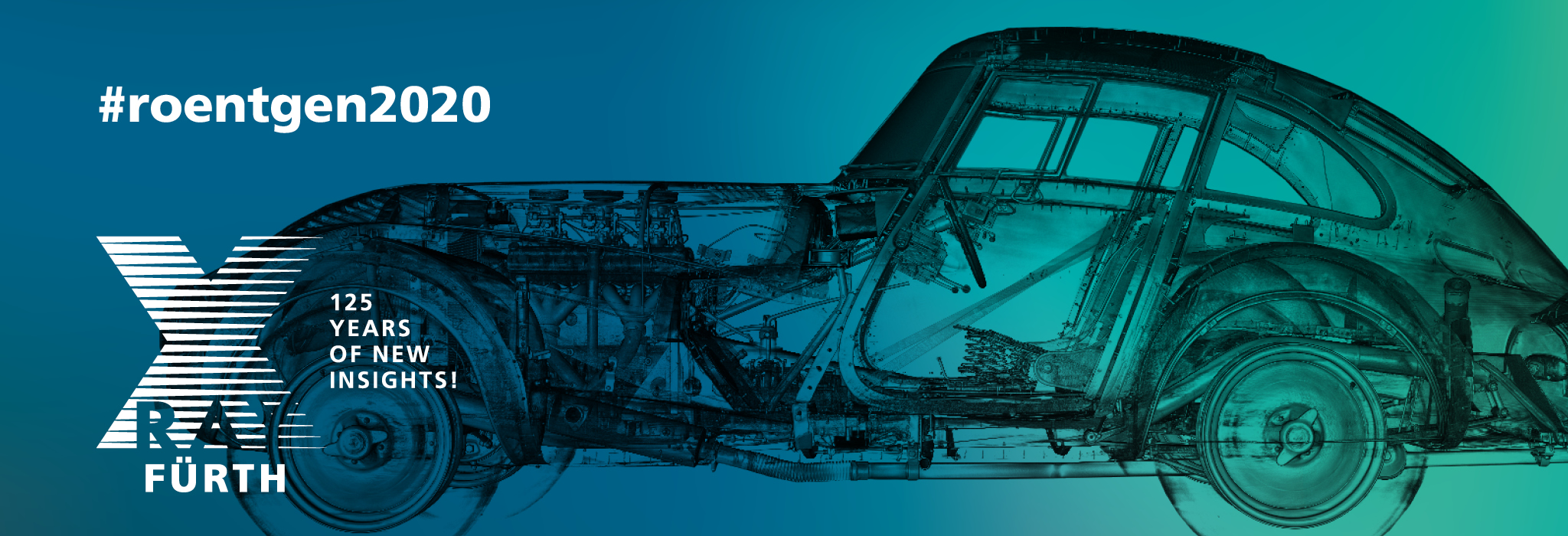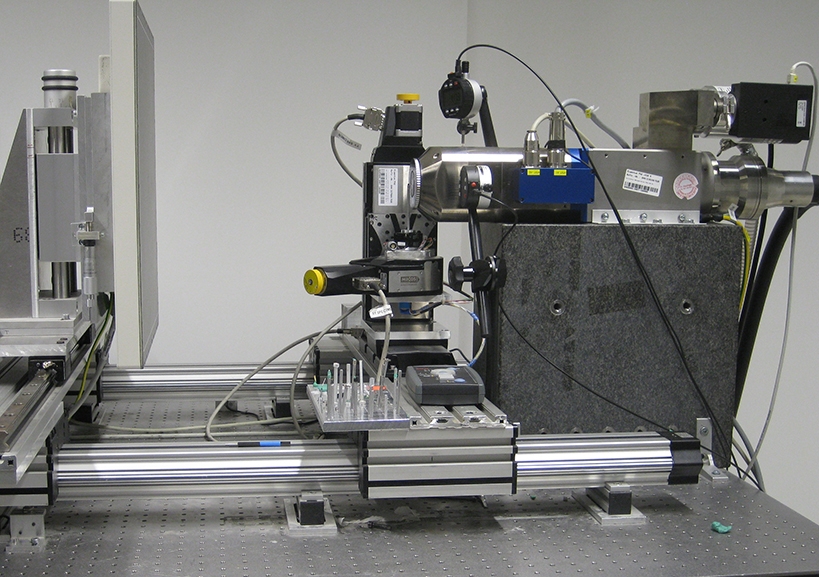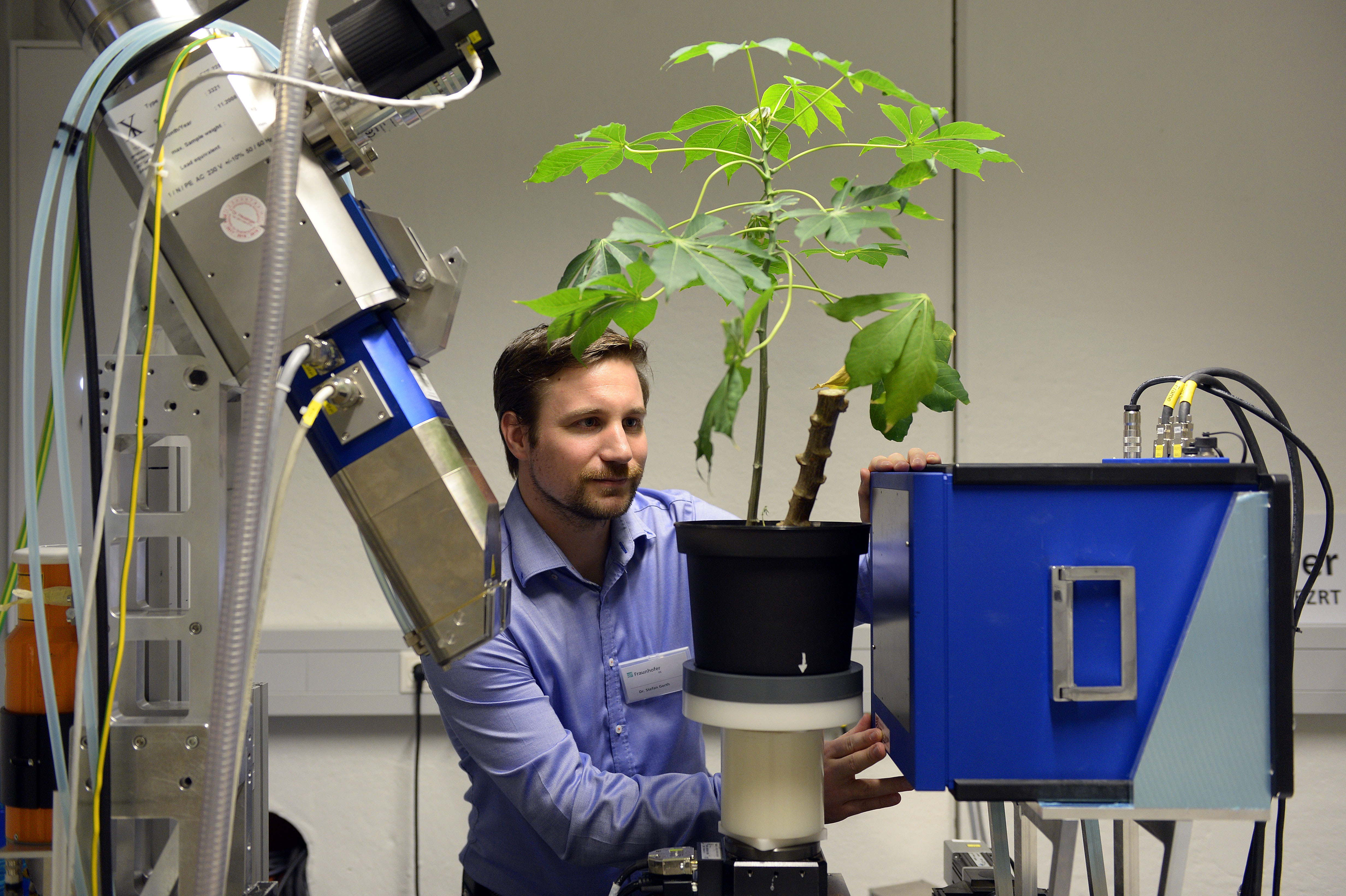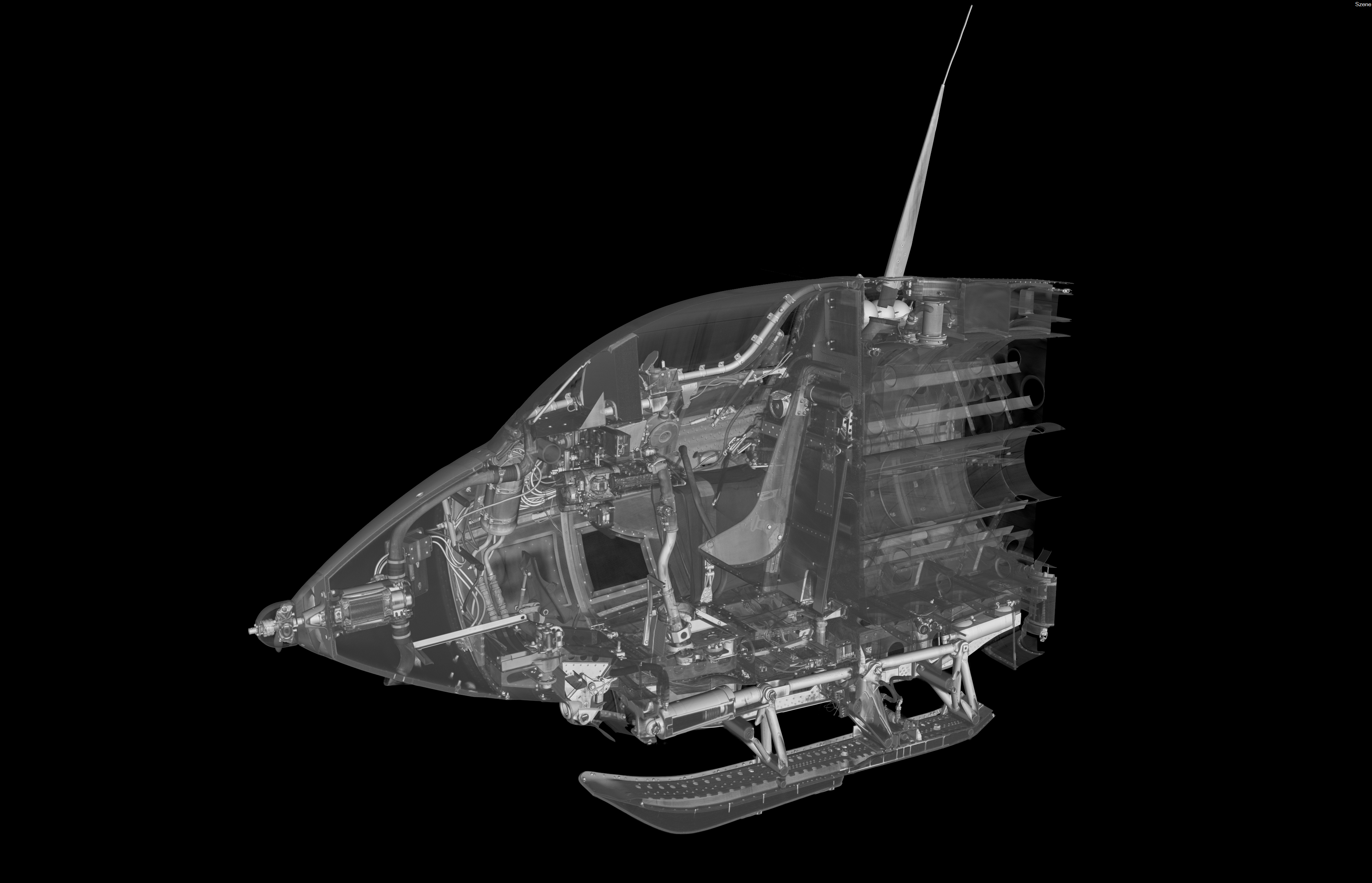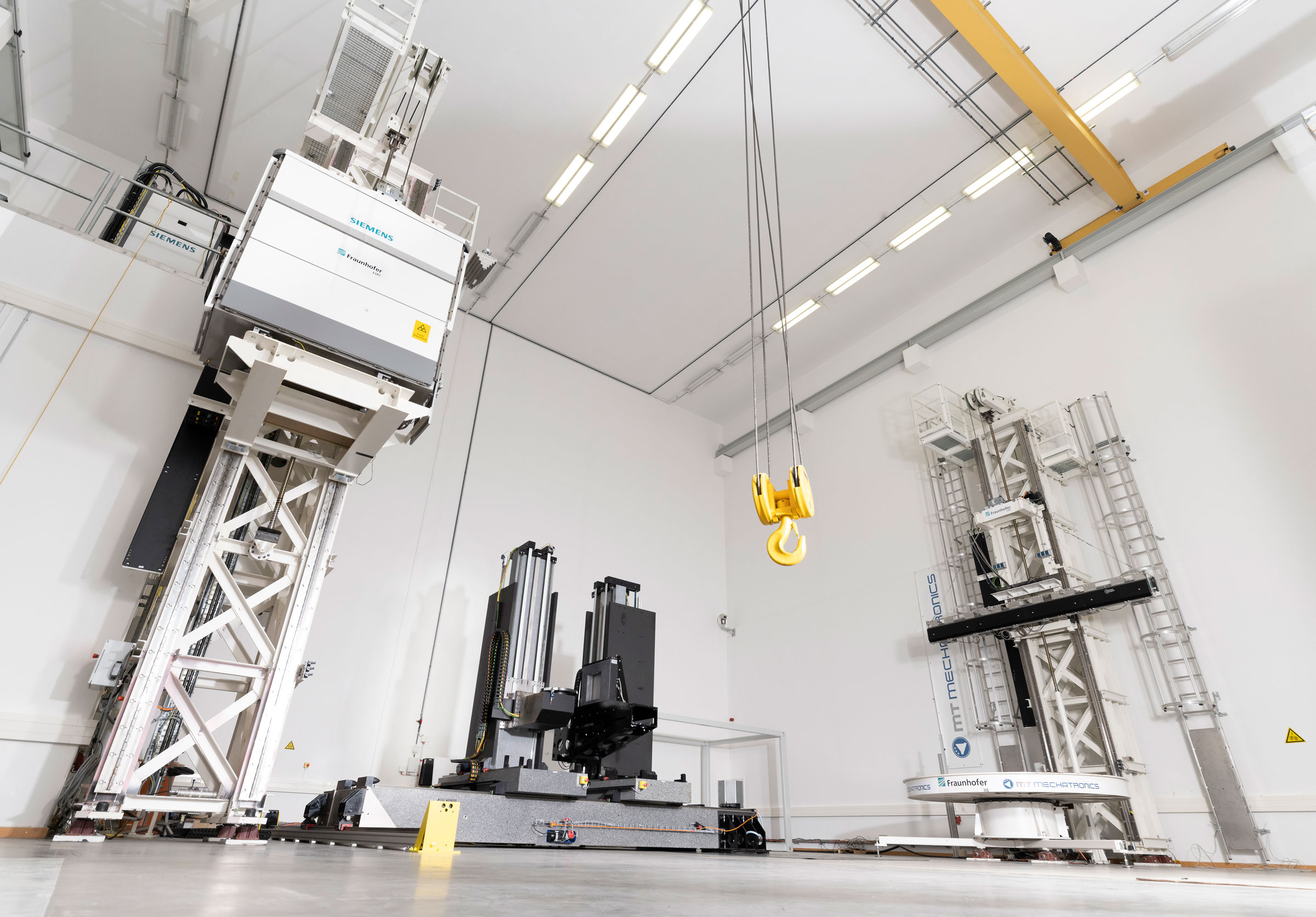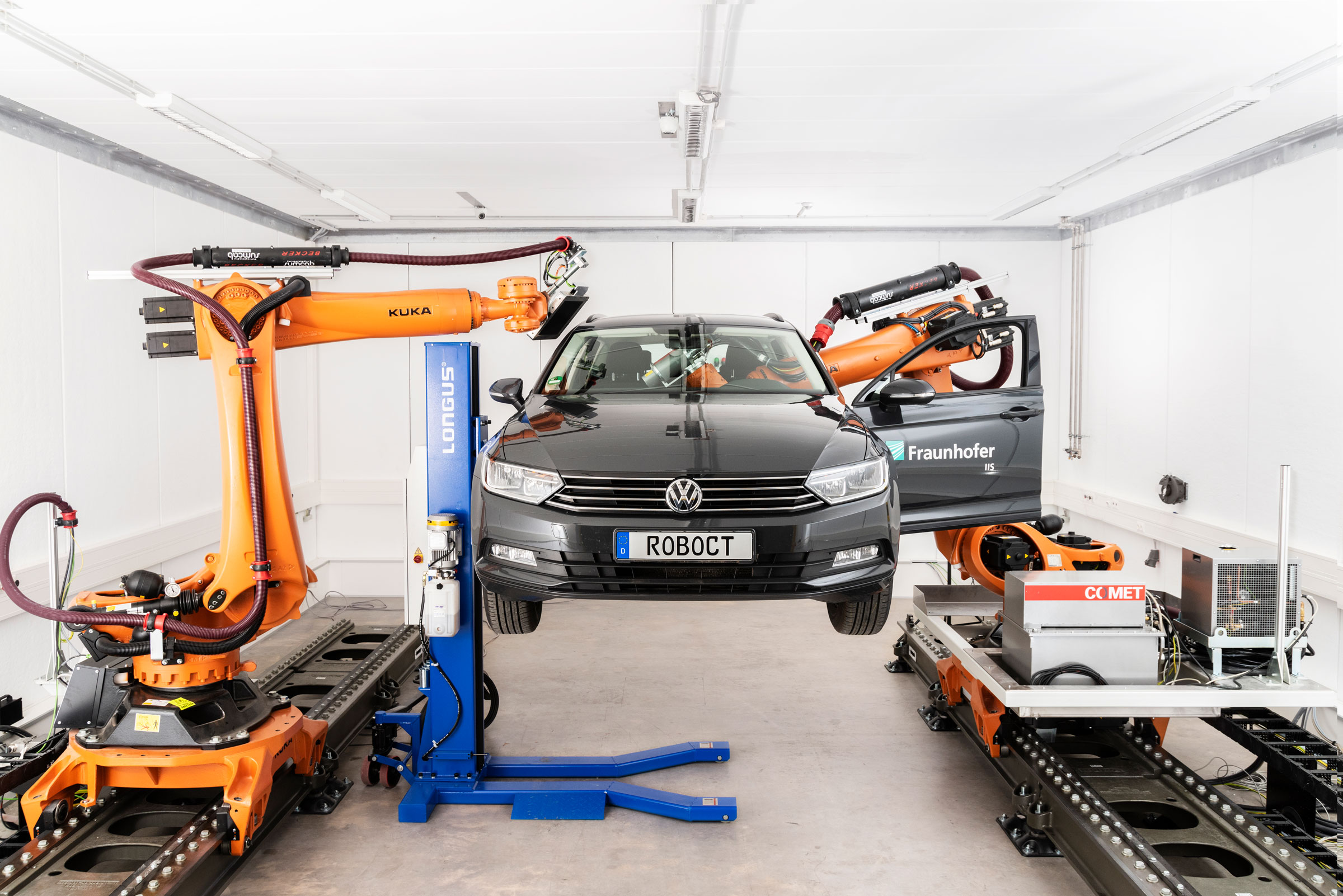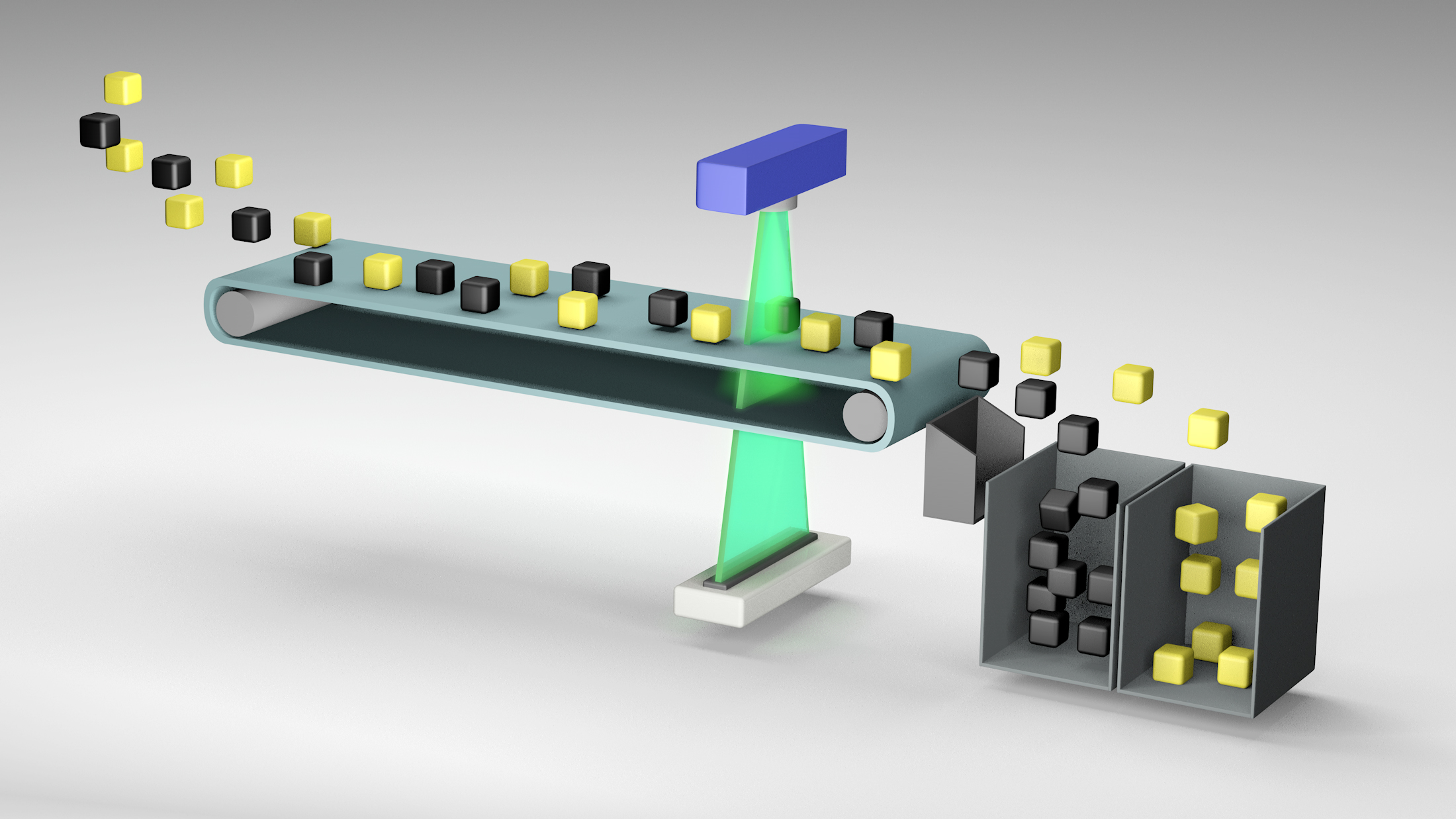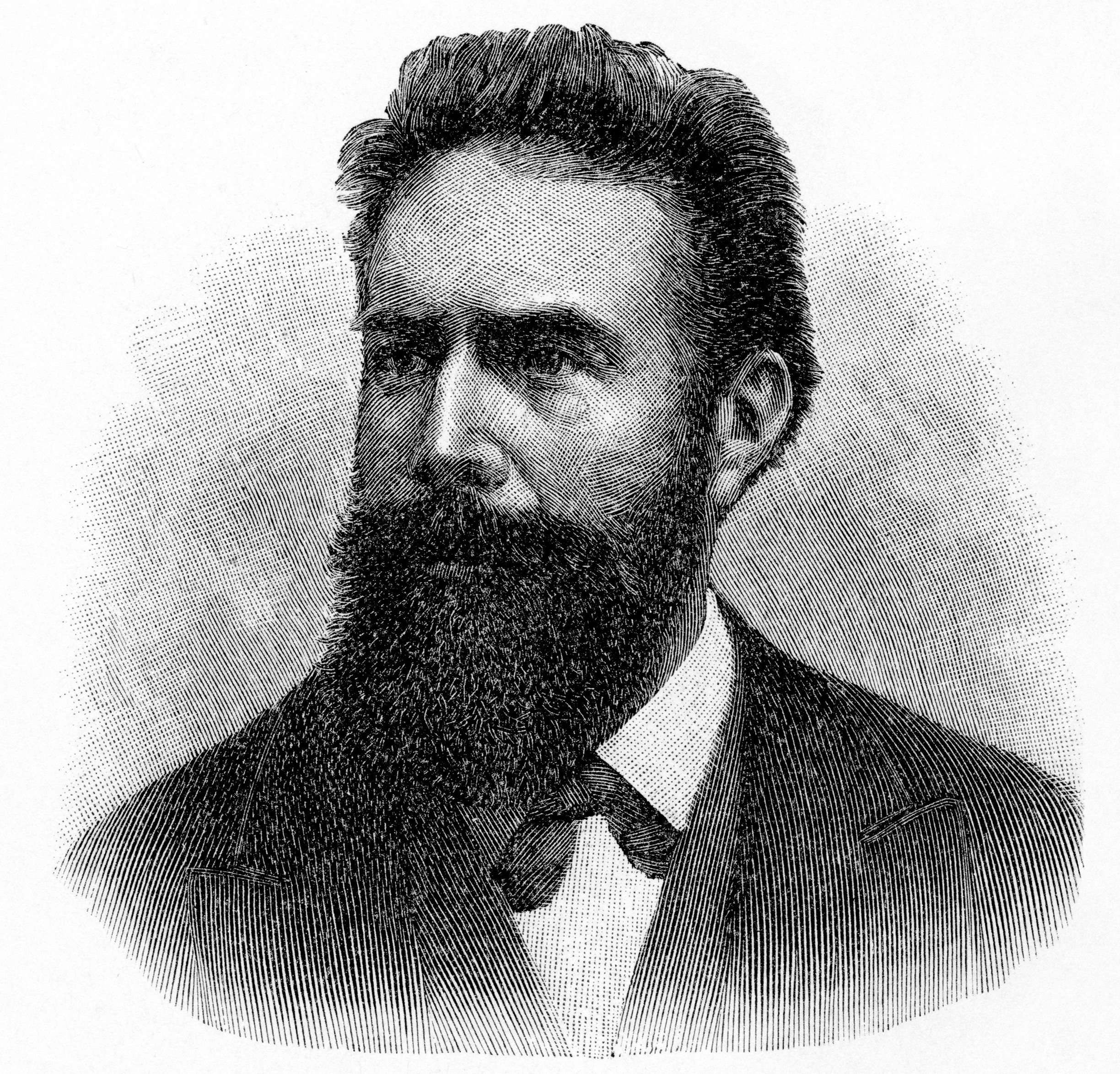2020 is the 125th anniversary of the discovery of X-rays by Wilhelm Conrad Röntgen. A few months after the discovery – on January 23, 1896 – the term »Roentgen rays« was coined, which remains the most familiar way of referring to X-rays in the German-speaking world. Fraunhofer IIS is marking the occasion by celebrating the »Year of the X-ray« based on the motto #125YearsOfNewInsights.
Year of the X-ray 2020: X-rays are 125 years old – and we are joining the celebration.
#TheOnesWithX-RayVision: Fraunhofer IIS is celebrating the Year of the X-ray 2020
At the Development Center X-ray Technology, we are walking in the footsteps of Wilhelm Conrad Röntgen with a team of over 150 experts. Over the past 20 years, we have raised X-ray technologies to a new level. In Fürth, we have the largest publicly accessible CT system in the world, which is capable of X-raying whole ship containers, cars and small aircraft. We’re the ones with X-ray vision.
The discovery of X-rays was revolutionary for science, business and society and opened up a wide field of new insights, development possibilities and applications. To illuminate this important chapter in the history of German science, various institutions have teamed up, driven by a sense of responsibility to collectively mark the Year of the X-ray.
In the footsteps of Wilhelm Conrad Röntgen: the Fraunhofer Development Center X-ray Technology (EZRT)
Over the past 20 years, the Development Center X-ray Technology EZRT at the Fraunhofer Institute for Integrated Circuits IIS, with Prof. Randolf Hanke at the helm, has developed into one of the most important research centers for industrial X-ray technology worldwide. The center’s research location in Fürth is home, among other things, to the largest publicly accessible computed tomography system in the world, which is capable of X-raying whole vehicles and shipping containers. At the same time, Prof. Hanke is Head of the Chair of X-ray Microscopy at the Julius-Maximilians-Universität in Würzburg – the very same university at which Röntgen himself taught. As »heirs« to Röntgen’s legacy, Fraunhofer EZRT and its staff feel a keen duty to inform the public about the opportunities and possibilities of modern X-ray technology for nondestructive material analysis as part of various initiatives and events. After all, the technology today can do much more than diagnose medical problems such as bone fractures.
Initiatives for anniversary year – X-ray on Wheels, X-ray art and much more:
| Date | Event | What’s it about? |
| Opening event »Röntgen’s Cosmos« with Harald Lesch at Congress Center in Würzburg | The event is taking place right next to the laboratory in which Röntgen first discovered X-rays in 1895. For the accompanying exhibition with experimental features, Fraunhofer IIS has contributed a portable X-ray machine. Named »X-ray Foyer«, the fascinating exhibition includes many experiments for visitors to try out. Entry to the »X-ray Foyer« is free. The evening event »Röntgen’s Cosmos« begins at 7:00 p.m. Tickets are available on pre-sale as of immediately from all the usual pre-booking outlets as well as online. | |
| The X-ray on Wheels | From April, the »X-ray on Wheels« is going on a tour of Germany. The goal is to promote knowledge and understanding of the huge importance of this discovery and to make this available to museums in particular. By virtue of a mobile X-ray computed tomography machine, researchers are able to render the invisible visible and support the virtual capture and recording of historically significant objects in collections and museums. The »X-ray on Wheels« is a full-featured mobile X-ray laboratory on four wheels. | |
| Physics on Saturdays, Physics with Insight – X-ray Images in the Digital Age (Simon Zabler), Julius-Maximilians-Universität Würzburg | Part of the »Physics on Saturdays« series, the »Physics with Insight – X-ray Images in the Digital Age«presentation by Dr. Simon Zabler will explain more about the technology behind X-ray engineering and what has changed over the past 125 years (May 2, 2020, 10.30 a.m., Julius-Maximilians-Universität Würzburg) | |
| InNUEvation, Fürth | As part of the Year of the X-ray in Fürth, the next »#inNUEvation« innovation conference is engaging intensively with innovations from various perspectives such as research, business and politics. The X-ray anniversary is being illuminated through a special exhibition that is designed to spur people on to new innovations. | |
| 13.09. - 01.11.2020 | Exhibition by X-ray artist Nick Veasey at Kunstgalerie Fürth | The exhibition at Kunstgalerie Fürth features works by the English photographer and artist, who often uses X-ray images in his art. Some of the spectacular images were created especially for this event. The exhibition will open on September 13, 2020 at 11:00 a.m. and can be visited until November 1. |
The man who started it all: Wilhelm Conrad Röntgen
Wilhelm Conrad Röntgen was born in Lennep in northwestern Germany on March 27, 1845 and was known as an introverted, modest man with a keen sense of justice. He discovered X-rays in 1895 at the physics institute at the University of Würzburg. For this achievement, he was awarded the Nobel Prize in Physics in 1901 and revolutionized medical diagnostics with his discovery.
When he was young, his family moved to the Netherlands for economic reasons. Röntgen had difficulty adjusting to school and was considered not very diligent as a pupil. On account of a misunderstanding, he was expelled in 1863 without having obtained a school leaving certificate. But his thirst for knowledge remained strong and he was determined to go to university. Unfortunately, however, he failed the admission examination, so he began attending courses in physics, mathematics, biology and languages as an auditor. In 1865, he passed the entrance examination for the Federal Polytechnic Institute in Zurich (today’s ETH Zurich) and in 1868 he successfully obtained a degree in mechanical engineering.
After that, he continued his academic career with a postgraduate course in physics, during which he met August Kundt and became his assistant, until finally he obtained a PhD in physics at the University of Zurich in 1869. In 1874, he became a lecturer at the University of Strasbourg. He came to the arena of his greatest scientific achievement in 1888 when he took up a position as full professor at the University of Würzburg. This is where he discovered X-rays on November 8, 1895. In December of that year, he X-rayed the hand of his wife, with the image clearly showing her bones and the wedding ring. When he received the 1901 Nobel Prize in Physics for his discovery, he endowed the associated prize money to the University of Würzburg. Because he wanted his discovery to gain widespread acceptance quickly, he decided against taking out patents. True to his modest nature, he also turned down a title of nobility.
Uncovering history: XXL computed tomography of the Me 163 rocket-powered interceptor aircraft
The Development Center X-ray Technology EZRT, a division of the Fraunhofer Institute for Integrated Circuits IIS, has analyzed the Me 163 Messerschmitt rocket-powered interceptor aircraft using XXL computed tomography.
This rare specimen comes from the collection at the Deutsches Museum in Munich. The curator team for aviation history is hoping that the scan will deliver new insights into the history of the aircraft.
Investigation of a Peruvian mummy using 3D X-ray computed tomography
XXL-CT
Our X-ray experts
For queries about the anniversary of the X-ray or technical questions about X-ray technology, Fraunhofer IIS has a range of experts at various locations:
Fürth:
Prof. Randolf Hanke
Specialist field: industrial X-ray technology; special focus: cognitive sensor systems
+49 911 58061-7510
randolf.hanke@iis.fraunhofer.de
Dr. Norman Uhlmann
Specialist field: industrial X-ray technology, special focus: XXL computed tomography
+49 911 58061-7560
norman.uhlmann@iis.fraunhofer.de
Dr. Steven Oeckl
Specialist field: industrial X-ray technology, special focus: production monitoring
+49 911 58061-7544
steven.oeckl@iis.fraunhofer.de
Michael Salamon
Specialist field: industrial X-ray technology, special focus: special systems and XXL computed tomography
+49 911 58061-7562
michael.salamon@iis.fraunhofer.de
Dr. Theobald Fuchs
Specialist field: industrial X-ray technology, X-ray physics and history of X-ray technology
+49 911 58061-7513
theobald.fuchs@iis.fraunhofer.de
Würzburg:
Prof. Randolf Hanke
Specialist field: industrial X-ray technology, special focus: X-ray microscopy
+49 931 31-83289
randolf.hanke@physik.uni-wuerzburg.de
Dr. Simon Zabler
Specialist field: industrial X-ray technology, Special focus: high-resolution X-ray systems
+49 931 31-86261
simon.zabler@iis.fraunhofer.de
Saarbrücken:
Prof. Randolf Hanke
Specialist field: industrial X-ray technology, special focus: non-destructive material testing
+49 681 9302-3811
randolf.hanke@izfp.fraunhofer.de
Deggendorf:
Prof. Jochen Hiller
Specialist field: industrial X-ray technology, special focus: non-destructive monitoring in trade
+49 991 3615-375
jochen.hiller@iis.fraunhofer.de
Passau:
Prof. Tomas Sauer
Specialist field: knowledge-based image processing; special focus: processing large 3D data sets
+49 851 509-3100
